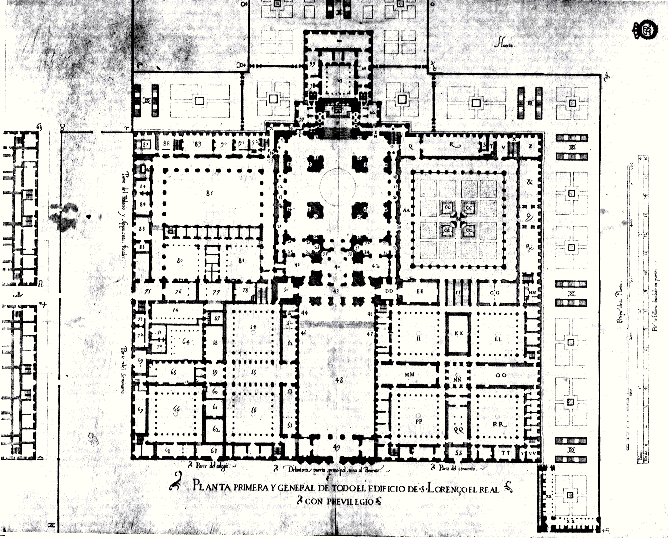

Antecedents
In 1557 Philip II, King of the Spanish Empire, won the french battle of Saint Quintin. Was the August 10th, day of Saint Lawrence (San Lorenzo). Philip II wanted to show gratitude for the victory and decided build a temple in honor to this Saint. Charles V becomes the founder of the Empire and his son, Philip II, who wanted a magnificence mausoleum for his father and a combination temple, pantheon, study center and meditation refuge for himself, decided that it should be located in San Lorenzo de El Escorial, where he would construct an inmense monastery. This is how the Monastery became the project of one who wanted to give future centuries a fundamental work which reflects the imperial ideals of Philip II for all time. It took 21 years to build: from the 23rd April 1563 to the 13th September 1584. The great expounders of the Humanism of the Renaissance helped the King accomplish his project which was defined by reason, symmetry and balance, without forget even for a moment the all important austerity he desired. Everything was included in a huge quadrilateral of granite and slate that contained :
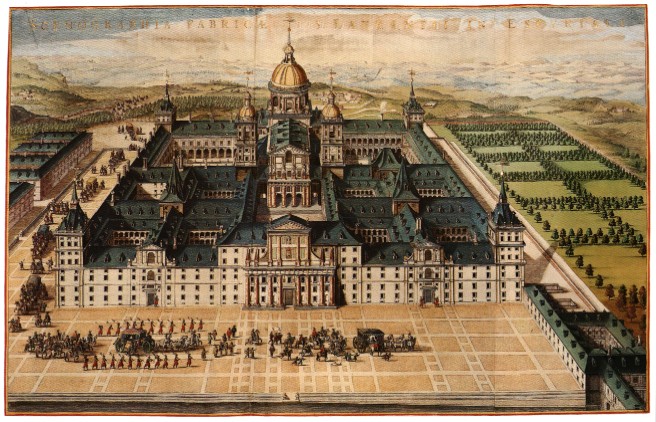
Description of the building
The Royal Monastery is situated on the south side of the chain of mountains dividing the Central Plain of Castille. It is 1028 metres above the sea-level, 32 milles NW of Madrid. The Monastery is surrounded by mountains to the North and West. A broad, beautiful plain stretches away to the South and East. The climate is almost continually moderate.
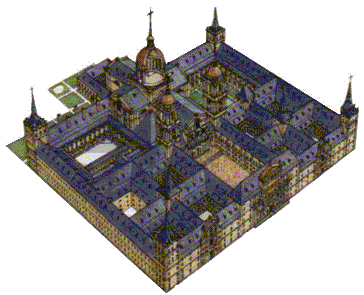
The building measures are 207 meters long and 161 meters width. Main structure was made by wood beam and granitic stone. The roofs are of slate and lead pieces. The architectural design is Toscan and Doric order. The main facade is comprised of a superb group of column, a statue of San Lorenzo and the Imperial coat of arms.


The Court of the Kings is found at the entrance with the facade of the Basilica to the rear. It has been given the name "Ante-chamber of eternity" and it contains the six huge statues representing the Kings of Juda, incluiding David and his son Solomon. The statues, the work of Juan Bautista Monegro, are 5 m high and were formed from a single piece of granite; the feet, hands and heads are of white marble, while the sceptres, crowns and insignia are of burnished bronze. In the way he arranged the different sections (library, basílica, cloisters, etc.), Philip II wanted to reflect the link between religion and humanism.
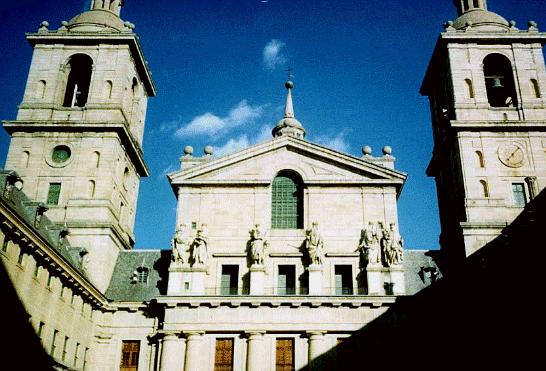
The library is situaded above the vestibule leading to the Court of the Kings. Aside from the Renaissance decoration featuring a dome painting by Pellegrino Tibaldi, the library has an enormously rich collection of documents which include Arab and Hebrew manuscripts as well as the personal library of Philip II. The floor is made of gray marble and the walls are covered with the bookshelves designed by Juan de Herrera and carved by Guiseppe Flecha y Gamboa. Among the singular works and manuscripts in the collection, we can find the Ballads of Alfonso X the Wise and the Virgilian manuscript. On the fourth division of the ceilling, just in the middle, in front of the statues of the Kings of Juda, the Queen of Sheba proposes her riddles to King Solomon.
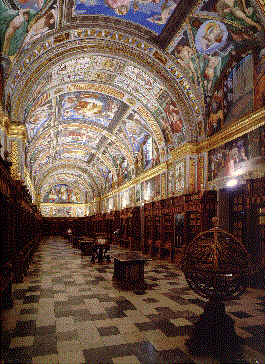
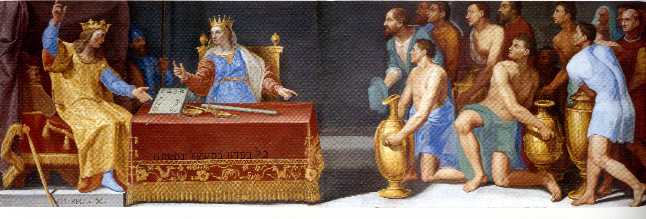
The Monastery can be considered a symbol of the might of the Spanish empire in the 16th Century. The Church, with his fortythree altars each of which is graced with paintings, occupies the central part. The ceilings are decorated with frescos by Lucas Jordan and on each side of the main altar we can find statues of Charles V and Philip II, the work of Pompeyo Leoni.
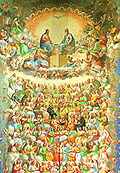
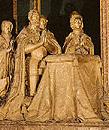
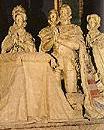
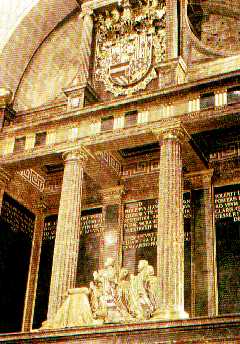

The Mausoleum of the Kings holds the remains of all the Spanish monarchs from Charles V to Alfonso XIII, also the rests of Don Juan de Borbón and his wife, Doña María de las Mercedes, fathers of Juan Carlos I are taking repose there. A marble gallery leads to the Mausoleum of the Infants.
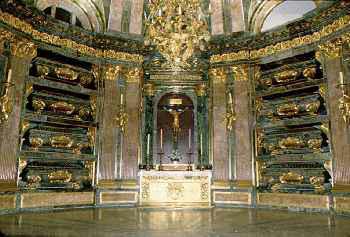
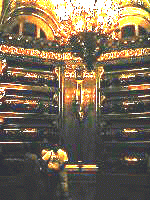
The Monastery also houses and important collection of painting and sculpture. We find paintings by excepcional artists such Tiziano, El Greco, El Veronés and Lucas Jordan. The furniture, however, is from the 18th Century. That was when the Palace of the Bourbons was added on to the Austrias. The Palace is divided into halls and rooms with rich tapestries made over models designed by Goya and which form part of the collection of tapestries based on models by Rubens, Tenniers and other painters.
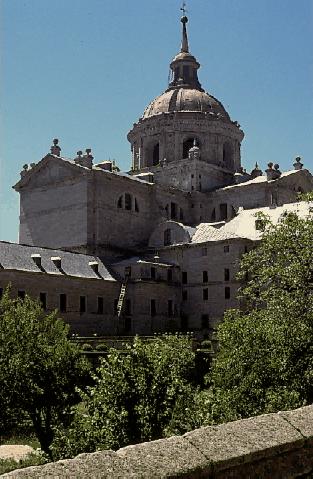
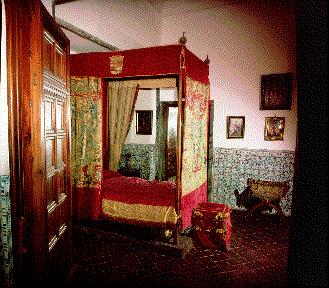
The most important sections of The Monastery are the library, the palace of Philip II, the Basílica, the Hall of Battles, the Mausoleum of the Kings, the Capitulum Chambers, the Museums and the Evangelists' Court. This grandiose court, measuring 46 m square, and enclosed by the four walls of the main cloister, is one of the finest and loveliest parts of the whole Monastery. The façades are in two parts, the lower in Doric, the upper in Ionian style. In the centre stands an octogonal Rotunda (round shrine), of granite, with the interior decorated in marbles. It is a masterpiece of Doric style, the work of Juan de Herrera. Its external decoration consists of statues of the four Evangelists, Matthew, Mark, Luke and John, sculptures by Juan Bautista Monegro. Four small fountains play into the four ponds surrounding the Rotunda.
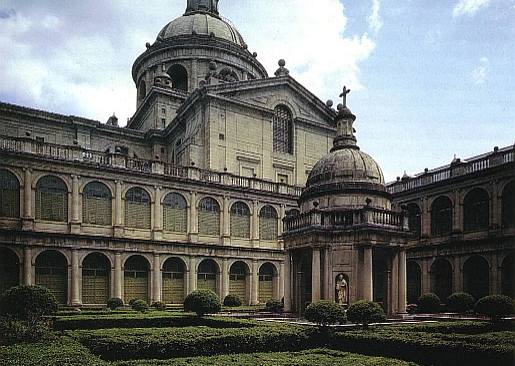
Schedule of visits to monuments
Every wednesday free entrance for citizens members of European Union.
Every monday the monuments are closed.
To concert the visits in groups, call:
| (2. El Escorial y los Países Bajos) |   |